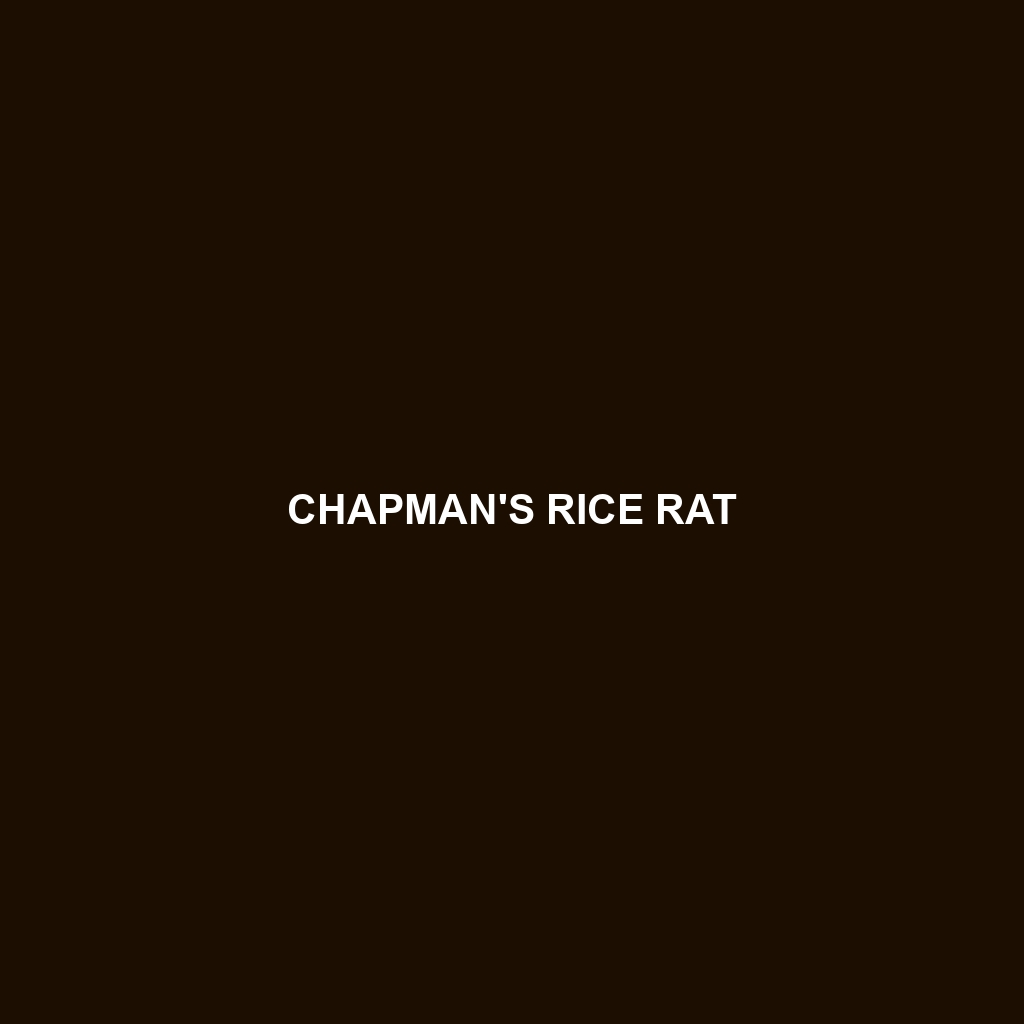Chapman’s Rice Rat
Common Name: Chapman’s Rice Rat
Scientific Name: Oryzomys chapmani
Habitat
The Chapman’s Rice Rat is primarily found in the subtropical and tropical regions of southern Florida and the Caribbean. This species typically inhabits wetlands, marshes, and areas with dense vegetation that provide ample cover and food sources. The availability of waterlogged environments is crucial for their survival, making them common in rice paddies and other agricultural landscapes.
Physical Characteristics
Chapman’s Rice Rat is a medium-sized rodent, measuring approximately 26 to 30 centimeters (about 10 to 12 inches) in length, excluding the tail. They have a slender body with a long, pointed snout and large, round ears. Their fur is typically brown or grayish with a lighter underbelly, featuring distinctively long whiskers and a robust tail that aids in balance. Their keen eyesight and sharp, curved claws help them navigate their wetland habitats effectively.
Behavior
This species is primarily nocturnal, exhibiting active behavior during the night. Chapman’s Rice Rat is both terrestrial and semi-aquatic, skilled at swimming and foraging for food in water. They are known to build nests within dense vegetation, often using reeds and grasses for construction. These rats are social creatures that may often be found in small groups, which can facilitate the sharing of information related to food sources and potential threats.
Diet
Chapman’s Rice Rat is omnivorous, with a diet that primarily consists of seeds, grains, fruits, and various aquatic plants. They also consume invertebrates and insects as supplementary food sources. The ability to adapt their feeding habits based on seasonal availability makes them resilient in changing environments. Their efficient foraging technique allows them to exploit a wide range of food options found in their wetland habitats.
Reproduction
The breeding season for Chapman’s Rice Rat typically spans from late spring to early fall, with females giving birth to litters of 2 to 6 young after a gestation period of about 28 to 30 days. The young are born blind and hairless, relying entirely on their mother for nourishment and protection during their early weeks. They reach sexual maturity in approximately two to three months, allowing for multiple generations to co-exist in the same habitats.
Conservation Status
Currently, Chapman’s Rice Rat is classified as vulnerable due to habitat loss and fragmentation primarily caused by agricultural expansion and urban development. It is essential to monitor and protect their wetland habitats to ensure the survival of this unique rodent species.
Interesting Facts
One fascinating aspect of Chapman’s Rice Rat is their ability to adapt quickly to fluctuating environmental conditions, allowing them to thrive in both natural and altered landscapes. Additionally, their impressive swimming skills make them less vulnerable to terrestrial predators.
Role in Ecosystem
Chapman’s Rice Rat plays a significant role in its ecosystem by contributing to the food web as both prey and predator. Their foraging helps maintain plant populations and promotes seed dispersal, while their presence supports a variety of predators, including birds of prey and larger mammals. This ecological interaction demonstrates the importance of conserving this species for the health of wetland environments.
